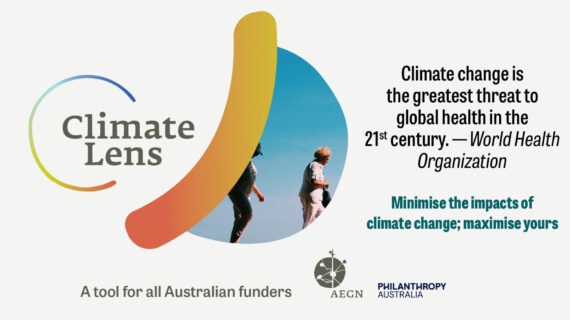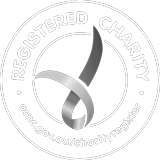Small Environmental Grant Scheme
Where do you fund?
- All around Australia, but only in Australia
What do you fund?
- Native flora and fauna conservation, threatened mammal conservation (Australia wide)
Is there a maximum grant limit?
- Grants are usually under $10,000. Wettenhall also grants on behalf of donors, and sometimes these programs can be over $10,000. If you have a project over $10,000, check with the Executive Director. Universities and academics can only apply for up to $5,000.
When can I apply for a grant?
- See the Dates for applying page for a list of opening dates for each of the four grant rounds in the year.
How do I apply?
- Using the on-line form. It only appears on-line when the grant round opens.
- If your project is about biodiversity conservation, and you meet the funding criteria, then you can submit an Expression of Interest. You may email first to check if you are eligible to apply, saving you the effort of filling in the form if you’re not on the right track.
- If you are accepted, you then have a limited time to upload some additional information including reference letters. If this information is not uploaded by the due date, then your application cannot be accepted. You must read the section on Can You Apply? before submitting your EOI.
How do I access the EOI form before the round opens?
- You can’t. The form will appear on-line when the grant round opens. This chart here has a list of the questions that will be asked (SEGS application questions) – only two questions at the EOI stage, and the rest if your EOI is accepted.
What if I’m not sure if I can apply?
- Email to check
My EOI will not submit
- Hopefully you’ll have your text saved in a Word document. If you are having problems, try a different browser. Email (no problem is too big or too small and the Executive Director is happy to answer any questions)
What are the reference letters?
- The reference letters support your full application if your EOI is accepted. The letters are not just contact details of referees, but letters people need to write about your project.
- They can be from a group you’ve worked with before and can show support for your organisation; or from a group who will benefit from your project and can say why they think your project is needed.
- A reference letter must be on letterhead, signed, and not from an employee, consultant working on your project, or some-one from your committee or board. They cannot be internal (unless you are a PhD candidate in which case your supervisor can write you a reference letter).
- Your reference letters need to show how you are connected in with land managers, or agencies or the community. The Wettenhall Trustees really value the reference letters when they are scoring your applications.
- Please don’t draft the letters yourself and just get them signed. Allow your referee to write the letters themselves so they are meaningful.
Can I apply more than once?
- The Executive Director will only accept one application from a group or individual in each round.
- If you weren’t successful in receiving a grant, you can apply again for the same project. However, this does not necessarily increase your chances as there is a scoresheet used by the Trustees when assessing applications, it is not a random exercise. If you didn’t get it the first time, applying over and over won’t help and the Executive Director may chose not to accept your application. Speak to the Executive Director before applying a second time. You may apply for a different project.
- If you were successful in receiving a grant you may apply again , after you have acquitted the first project.
Do I need DGR status, an ABN or to show other certificates?
- No. As an environment group with charitable status, Wettenhall Environment Trust is able to give grants to anyone or any group, as long as they meet the criteria for funding.
Does the grant contain GST?
- No. If you are successful in receiving a grant, it is a donation/gift and does not contain GST.
What can university applications include?
- You can ask for help with travel (petrol), or accommodation when going out in the field. You can buy equipment, or undertake testing.
- We want the whole grant to go to the researcher/student. So we won’t pay the university’s overhead or administrative charges. Please also note that any equipment purchased with the grant remains the property of the university for another student or researcher to use.
When do I know about my application?
- The Trustees meet four times a year to decide on applications. See the Dates for applying page. We can’t fund retrospectively so make sure you get the dates right.
How do I find out about the success of my application?
- You will get sent an email. It is sent to the email address that was used in your on-line application. The Executive Director cannot provide feedback, particularly as to why you weren’t funded.
Who gets the larger funding?
- These are our landscape restoration projects. This area is not open for application and you won’t be able to apply for grants of $30,000 under the Small Environmental Grants Scheme.
Do you fund equipment?
- Yes. However, the equipment must be a necessary part of a project that is concerned directly with biodiversity preservation.
Do you fund travel?
- Yes. However, this travel must be a necessary part of a project concerned with biodiversity preservation.
Do you fund school gardens or arboretums? What about my permaculture project?
- No. Sorry, we haven’t enough money for all the requests for developing kitchen, bush, sensory, bush kinder, permaculture, Indigenous or similar garden projects or arboretums either in schools or elsewhere in the community.
Do you fund fencing, weed and pest control and tree planting?
- No. There is funding for this kind of on-ground work available from government bodies. We are too small to be able to support this kind of work all the way around Australia.
Do you fund buildings?
- No. We’re too small for that kind of capital outlay.
Anything else?
- Just ask, so email.


